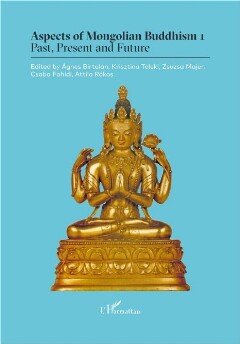Page 453 [453]
MONGOLIAN FEMALE PRACTICIONERS; QUEENS AND KHANDROMAS — PAST AND PRESENT
The translation of this text is still highly valued for Mongolian Studies and the study
of Mongolian Buddhism. Although there is no specific record written about Queen Cin
BiSrelt Taixal, she was obviously a renowned illuminator, poet, and translator. She was,
in the history, praised highly like her patriotic son.
Queen Dondogdulam (1874-1923)
Dondogdulam was born in the family of Cogdon Xia in the khoshuu (Khal. xosiz) of
Xuwé Jonon Beis Canligdorj of Setsen Khan aimag (Khal. Secen Xän aimag). She was
the junior queen of Beis Canligdorj but in 1886, she was offered to His Holiness the 8"
Jebtsundamba (Khal. jawjandamba) during his visit to Amarbayasgalant Monastery for
paying homage to the sacred body of his previous incarnation. She was not enthroned
immediately but she was trained in the rules and regulations of the palace, and other
rituals. At the meantime, she diligently studied the literacy. Afterwards, she was en¬
throned as the queen in the summer of 1902. She then received the titles “Ex Dagina”
and “Aclalt, Yalgun Dagina, Erx Cagan Dar ’Ex”. Queen Dondogdulam studied exten¬
sively the Tibetan and Mongolian languages and, particularly, the Chod Practice under
the spiritual guidance of Tantanjalbü, and Gowin Noyon Xutagt and Xüxen Xutagt. It
is said that her teacher, Darxan Corj Luwsandondow Lama always praised her amazing
skills and voice when she chanted prayers. Due to her excellent qualifications and
knowledge, the Chod Practice became very popular and the women in Mongolia
started to build monasteries and extensively study the Noble Dharma. She established
Sangai Aimag, one of the Khiiree’s (Khal. xtiré) thirty aimags and actively engaged
in activities such as the translation of sütras and the printing of Kangyur, Tengyur
(Khal. Danjür) and various Buddhist arts. She was assigned officially in charge of
making traditional clothes, statues and gifts. 120 artists from Sangai Aimag worked
under her leadership. Some of her creations have been well preserved until today. For
example, many applique thangkas she made are still on display in the museums of
Bogd Khan (Khal. Bogd xan) Palace and Dsanabadsar (Khal. Janabajar) Fine Art
Museum.
Xandroma and Tara (Khal. Dar’ ex) (20"-21* Centuries)
During the communist regime that lasted over 70 years in Mongolia, monks who sur¬
vived this brutal suppression practiced Buddhism secretly. During this regime, it was
impossible to train their next generation. Therefore, they inherited their knowledge to
their own children secretly. If they had girls, they made the girls understand that they
were spiritual daughters of Tara. Therefore, the parents gave rare transmissions to
them for the sake of the suffering ones. Generally, in Mongolian Buddhism, there is no
451

